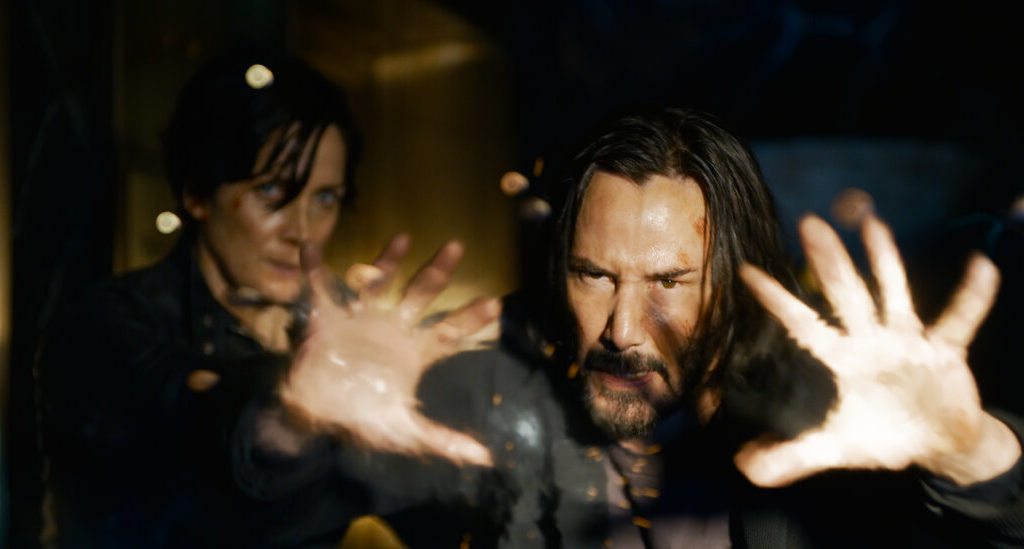You may find yourself asking much the same question while watching the fourth movie in “The Matrix” series, as it alternately amuses and frustrates you with its fantastical world.
The series first invoked Lewis Carroll’s elusive bunny in the first movie, the 1999 genre game changer that was jointly directed by the Wachowski siblings and soon set audiences’ heads on fire.
Once again, Reeves plays both Thomas Anderson and Neo, who exist in separate yet conjoined realms. Anderson’s world resembles our own but is a software program called the Matrix that’s run by artificially intelligent machines.
Somewhere in the illusory world, a woman with short hair fights unsmiling men in suits and shades, a setup that mirrors the banging preliminaries in the original film and makes you ache for Carrie-Anne Moss’s Trinity, Neo’s comrade in arms. Don’t worry, she’s onboard, too, just wait.
Instead, a silky Jonathan Groff now prowls around menacingly, his boyishness having been nicely weaponized for his role as a sly trickster.
Like others of this type, “The Matrix” plays with the perception of reality held by both the protagonist and the audience, poses questions about the limits of knowledge and addresses doubts about other minds and worlds.
So, yes, “You have many questions,” as a character called the Architect tells Neo in the first “Matrix.” No kidding! That movie offered some persuasive, or at least tantalizing, answers: The world is an illusion, a simulation, an ideological prison, but it’s possible to escape with lots of guns and cool kids in black, that is until the sequel.
The movie they’re in is still as beholden to the same old guns and poses as the earlier ones, the same dubious ideas about what constitutes coolness, the same box-office-friendly annihilating violence.
